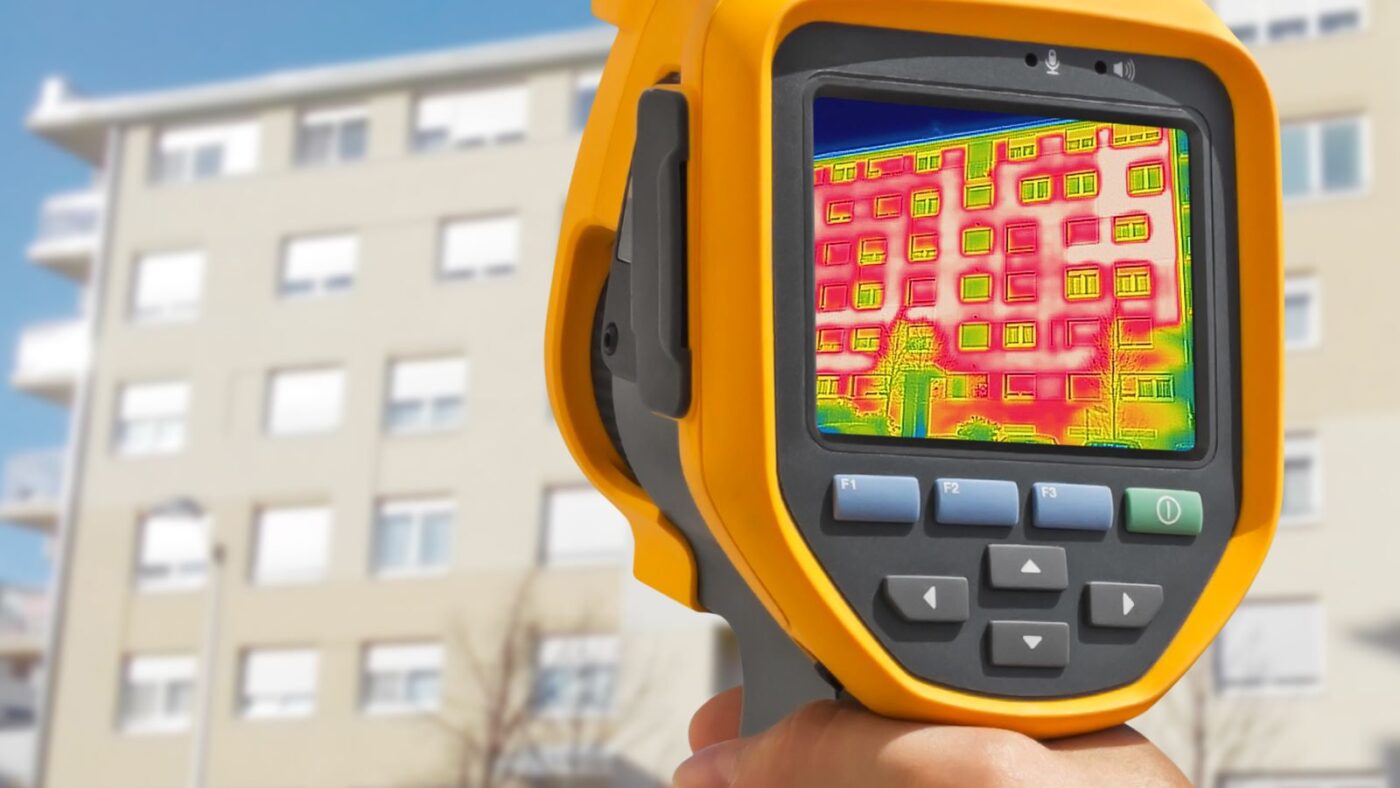A common saying among real estate professionals is that every building is different. When gathering due diligence information during a Property Condition Assessment (PCA), the inspector encounters that uniqueness first-hand in the site walkthrough, which can sometimes be difficult and occasionally physically challenging. For example, there may be a section of the building’s exterior that warrants closer inspection but is inaccessible without tall ladders or fall protection equipment.
Technological advancements in unmanned aerial vehicles (drones) and thermographic cameras in recent years have created better options for assessors to gather data and evidence for their reporting. While both have been around for well over a decade, recent innovations and their continued trend providing greater detail has made them increasingly useful for PCA inspectors. They also now provide more precise measurements from remotely controlled devices and non-destructive sampling, giving the consultant greater capability to report useful information to the client with faster turnaround.
DRONES
These self-contained units provide a platform for high-quality video and photographic evidence gathering for the controller (pilot) from a remote ground-based position. A few of the advantages drones provide the assessor include:
Efficiency– These devices can traverse the exterior of a project structure in a matter of minutes. This feature allows evidence to be viewed and gathered from all heights efficiently. Additionally, excess time and ladders are not required to access roofs or a building’s upper floors and balconies.
Agility– In the control of an experienced pilot, drones can be maneuvered precisely to access areas of damage, overhanging structures, and small panels with ease. High-resolution photographs of intricate details can be taken for a report, while video of an entire project site is being gathered.
Safety– Due to the remote position of the controller, the assessment of a building’s exterior does not require any unsafe climbing or physical access to any dangerous areas.
THERMOGRAPHIC IMAGING
Infrared, or thermographic, cameras provide high-quality images of temperature differences which can be valuable in the study of moisture retention, energy loss, and structural integrity. Thermography provides an assessor with visual data which can be used to:
Inspection– Using infrared technology allows the assessor to recognize areas where moisture is being retained in spaces between material layers. The moisture is evident when measuring the difference between how quickly two layers cool following exposure to heat.
Location– Thermographic imaging also allows efficient locating of deficient segments within electrical and mechanical systems through a non-invasive, non-destructive means. Thermal images of heat dissipation resulting from localized device or system faults caused by material defects, short circuits, and unit failures can provide details of the issues leading to electrical system damage and inefficiencies.
Study– Infrared images of the movement of heat through a structure’s envelope due to leakage at opening points and material joints is a quick and non-destructive means of gathering data for energy efficiency studies. The data gathered can be used to identify areas where improved insulation and joint sealants would provide better envelope integrity.
DATA USES
The information collected using drones and thermographic cameras provide the assessor with more precise information to create their Property Condition Report (PCR). Combined with our physical property inspections and digital photography, the use of remotely taken images and scientifically gathered details through non-destructive means is an opportunity for VERTEX to provide its clients with better information. Inclusion of this data within our reports allows our clients to make more informed decisions concerning the property they’re acquiring or planning to renovate.
HOW CAN VERTEX HELP?
VERTEX provides our clients with the most technologically advanced resources to assist them with the Due Diligence processes necessary for acquiring, renovating, and refinancing properties throughout the United States, Mexico, and Canada.
To learn more about VERTEX’s Environmental Consulting services or to speak with an Environmental Expert, call 888.298.5162 or submit an inquiry.
Author: Mark Morgan



